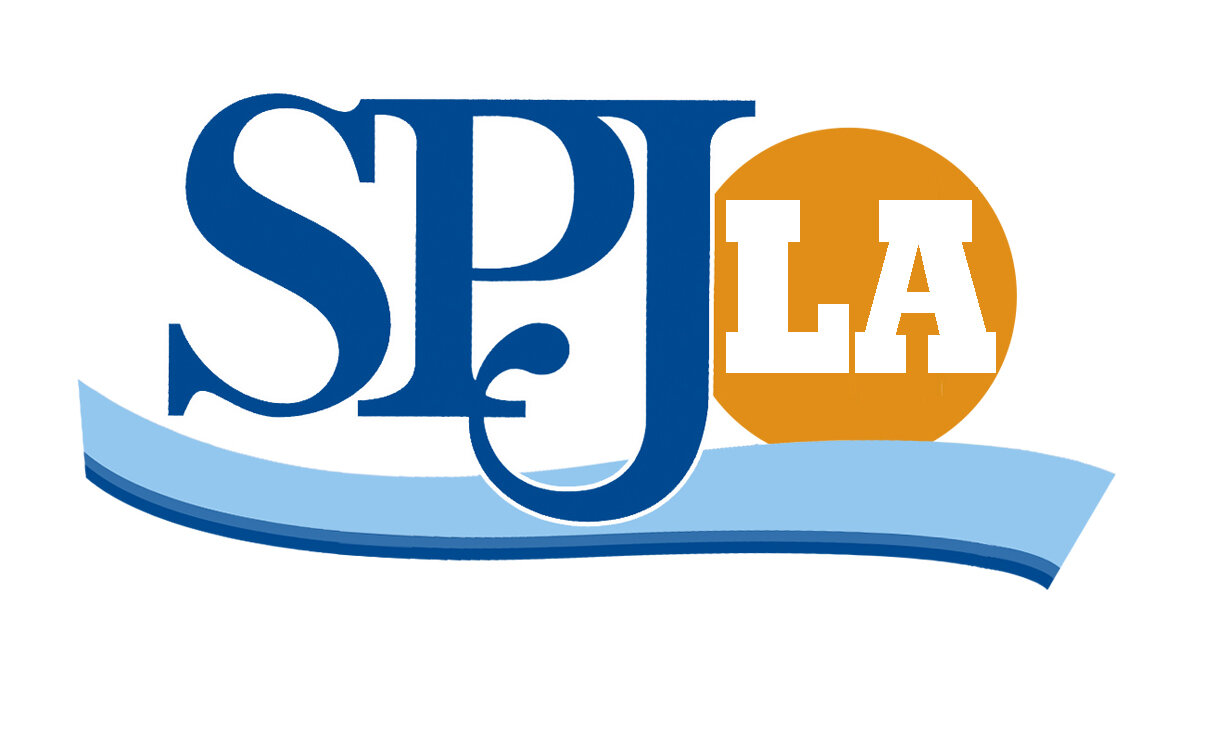Recap: SPJLA Hosts Panel on Anonymous Sources at NBC4 News
Journalism seeks to bring the truth to light, but what if a source prefers to remain anonymous in the public eye? We, as journalists, know the source's identity, but sometimes those sources don't want to be known. The use of unnamed sources in journalism arouses a multitude of ethical dilemmas.
The Greater Los Angeles chapter of the Society of Professional Journalists recently hosted a panel discussion on "the ethical dilemmas in identifying trustworthy sources and knowing when to run with anonymously-sourced information." The discussion took place at NBC4 Southern California in Universal City on April 16 and was moderated by NBC4 News Managing Editor Matt Goldberg.
The discussion aimed to answer the 5 Ws (and H) of anonymous sources:
Who: Who is the source?
What: What is the risk of using it? What if they’re wrong? What is it worth?
Where: Where are they getting the information? Where is their loyalty?
When: When do we need anonymous sources?
Why: Why do we trust them?
How: How will it affect us? How will it affect them?
Media outlets have various practices on the use of anonymous sources, and the panelists offered a glimpse into their respective companies' standards. Panelist Justin Pritchard, a reporter for the Associated Press, shared the AP's rules on anonymous sources. AP reporters who use information from anonymous sources must obtain approval from their news manager before sending the story to the desk, Pritchard said.
Kim Bui, the West Coast producer at reported.ly, addressed the issue of using a single source anonymously. Bui covers international news largely through social reporting, where her Rolodex is "literally the Internet." She advised the audience to never believe anyone "wholeheartedly" and to utilize Internet as a tool to corroborate and verify an anonymous source's information.
Elizabeth Aguilera, a senior health care reporter for 89.3 KPCC-FM, added that a secondary source doesn't necessarily have to be another person. For example, paperwork can be used to corroborate an anonymous source's information.
There are instances where a reporter would never use an anonymous source. Andrew Blankstein, a reporter for NBC News Investigations, cited consent issues that can arise when interviewing minors. Children can certainly inform a story, Blankstein said, but he would never use them as an anonymous source.
While reporting, journalists must be cognizant of a source's motives or agenda for divulging information. Aguilera said that she oftentimes asks anonymous sources outright what their motivation is for sharing a particular piece of information. While sources can, and sometimes do, lie to reporters, this question helps give her a sense of where the source's head is at, she said.
Journalists should also research the source itself. They must be able to assess a source's credibility, motivation and reliability.
The reported.ly team does a "social analysis" on people, Bui said. They conduct something similar to a background check. The team researches who a source is associated with, the people in their inner circle and their employment history.
Pritchard and Blankstein go directly to the source. Blankstein said he likes to ask his sources if there is something he should know about upfront, i.e., a personnel complaint, an arrest, etc.
Sometimes, a source may be the one having second thoughts about moving forward with a story. The anonymous source might be afraid of potential blowback or the repercussions that could arise after the story is published."Interview their fears," Pritchard said. Figure out what has changed and why they are having second thoughts. Blankstein said he engages in a cost-benefit analysis by weighing the short and long-term benefits of using that person as an anonymous source.In extreme circumstances, members of the media are pressured to reveal their sources. Some matters may eventually go to court and refusing to reveal a source in a legal proceeding could land a reporter behind bars.
Aguilera said she has had these tough conversations with managers and that each situation, source and story is different. Nevertheless, it's the journalist's duty to set boundaries on how far they are willing to go for a source, Bui said.
The four journalists on the panel shared personal stories with attendees relating to the use of confidential sources. These types of ethical dilemmas aren't limited to just one medium — whether the form is print, broadcast, online, or radio — issues with anonymous sourcing are unavoidable.
Ultimately, it is best practice to pursue information on the record. But, in some cases, unnamed sources may bring to light stories that otherwise would never surface.
By Whitney Irick
